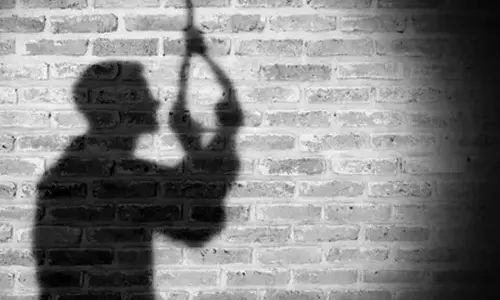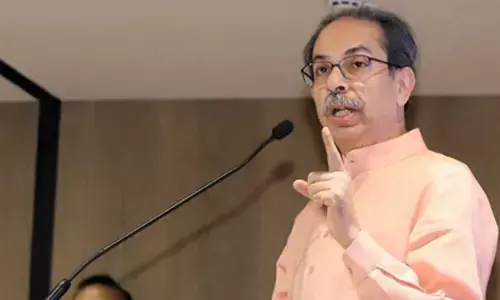Scourge of casteism won’t go easily

Cases of honour killing following inter-caste marriages, hitherto believed to be restricted to some States like Rajasthan or Haryana, seem to be common all over India not excluding the States recording educationally above national average. To the surprise of many observers, the land of Periyar EVR, the unmatched crusader against caste and caste practices who also moved closely with common people,
Caste-based attachments are common throughout the caste ladder. Those at lower levels are more keen to assert their superiority over those at the bottom than joining with them to resist those above all of them. Similarly, those at the middle level are proud to claim superiority over all those placed at lower levels rather than joining them.
The practice of “untouchability” within so-called “untouchables” still lingers in many places however vehemently we may deny it. They serve as the popular mandate for caste. The satisfaction of having somebody below seems to add flavor to the caste system for its social functions. The addiction to caste is too strong to be given up easily. It also runs through the entire hierarchy
Cases of honour killing following inter-caste marriages, hitherto believed to be restricted to some States like Rajasthan or Haryana, seem to be common all over India not excluding the States recording educationally above national average. To the surprise of many observers, the land of Periyar EVR, the unmatched crusader against caste and caste practices who also moved closely with common people, is recording more and more instances of persecution of couples marrying out of caste. Where one is a Dalit, the event may end in a tragic death.
The latest in the series is the attack on one such couple resulting in the death of a Dalit youth in Tiruppur district of Tamil Nadu. Since 2013 over 80 honour killings have been reported in the State and the victims include youth of both sexes. It seems that Periyar had succeeded in establishing some vital anti-Brahmanical stand like anti-Sanskrit, but not the common attachment to caste that has taken deep roots among the people of all castes. Chanting of mantras in temple worship in Tamil replacing the holy Sanskrit is accepted, but inter-caste marriage is still intolerable among many castes – high and low – provoking violent clashes.
One of the important regional political parties – the PMK - has even condemned “love marriage” as it is mostly inter-caste. Many cases of “honour killing” as punishment for inter-caste marriage also fall under atrocities against SCs and STs and/or instances of traditional patriarchy asserting its supremacy over women and the youth. Periyar’s firm conviction that untouchability cannot be eradicated without abolishing caste has made no dent in the society.
Like marriage, education is another area subjected to strong caste prejudices. Educational institutions from elementary to research level not excluding professional and technical courses are typical public places that need to be educated on concepts and practice of rights, equality, empowerment, development, and reforms. Rohith Vemula’s suicide in the Hyderabad University has been politicised leading to a call for Rohith Act to end caste-based prejudices in campuses jointly by the Congress, the CPI(M) and the AAP Party. They grabbed this opportunity to gain political advantage by assuming a strong pro-Dalit posture and by attempting to malign their opponents.
But, the ruling party at the Centre, the BJP, is neither the originator nor the sole patron of caste prejudices as they all know very well. The malady crosses party and caste borders. Caste-based attachments are common throughout the caste ladder. Those at lower levels are more keen to assert their superiority over those at the bottom than joining with them to resist those above all of them.
Similarly, those at the middle level are proud to claim superiority over all those placed at lower levels rather than joining them. The practice of “untouchability” within so-called “untouchables” still lingers in many places however vehemently we may deny it. They serve as the popular mandate for caste. The satisfaction of having somebody below seems to add flavor to the caste system for its social functions.
The addiction to caste is too strong to be given up easily. It also runs through the entire hierarchy. How else can one explain the social ostracism of the Tribal Welfare and Sports Minister of Odisha announced by the country’s highest tribal body for allowing his daughter to marry a Brahmin youth? Article 17 of the Indian Constitution in the chapter on Fundamental Rights abolishes “untouchability” and its practice in any form. Imposition of any form of disability arising out of “untouchability” is an offence punishable in accordance with the law.
Further, the Protection of Civil Rights Act 1955 amended and tightened as the Untouchability (Offences) Act provides punishment for denial of civil rights to the groups excluded so far. The Scheduled Castes and Scheduled Tribes (Prevention of Atrocities) Act 1989 is specifically intended to prevent and punish crimes against the castes so designated. The term “atrocities” is used in the Act to refer to the offences committed against SCs and STs that are “ shockingly cruel and inhumane,” whereas the term “crime,” generally used in penal laws, refers to any act punishable under law. They are awarded punishments higher than for similar offences under the Indian Penal Code.
One of the objectives of the Act is to help social inclusion of Dalits into the Indian society as equal members. The Act also provides for special courts for trial of offences amounting to “atrocities” and for providing for relief and rehabilitation of victims of such violence. However, reports of Crime Research Bureau reveal high rate of complaints, but low rate of convictions.
The Act was amended in February 2016 to make it more stringent. It prescribes punishments for public servants for neglecting their official duties relating to SCs and STs. Special courts have to be set up at the district level with exclusive public prosecutors to speed up trial process.
Despite these legal remedies to protect and safeguard the equal rights of the weaker sections, shockingly cruel treatment meted out to these classes as normal customary practice and as punishment specifically for violating any practice is reported from various places as sensational news. Hundreds of forms of discriminatory practices have been noticed by researchers. Forms of untouchability are also getting “modernised” in keeping with the changing times.
Indeed, caste-based discrimination is the most complex human rights issue that haunts India. The findings of studies demonstrate the total ignorance of anti-caste laws and utter disregard for implementation of the laws among people and law enforcing authorities.
The remorseless behavior of some people committing atrocities including “honour killing” manifested in their remarks openly condemning marriage with Dalits is evidence of both ignorance of laws as well as scant respect they have for laws.Customs, conventions, and ritual practices restrain Dalits from asserting their rights; institutions like caste or Khap Panchayats, and assemblies of village elders which resolve local issues and disputes in many villages without any legal authority contribute a lot to the perpetuation of caste discriminations in villages.
Ideas are changing but not at the rate required because of official apathy and inadequate and lack of public outrage against inhuman caste discriminations. Constructing partition walls, digging separate wells, forming separate queues in ration shops, and providing separate bench for Dalit students in classrooms are found easier by the authorities to prevent clashes, but they are not solutions for this long-standing social problem. On the contrary, they are devices to perpetuate caste along with legal entitlements.
Education can certainly help social mobility and inclusion. Positive political will to enforce laws against the practice of any degree of “untouchability,” and earnestness in devising effective ways of ending social segregation on the part of society and the State are necessary. The point is that it is futile and looks like a child’s play to fight party battles over issues like that of Vemula Rohith. Every citizen is a participant in the caste system.

















